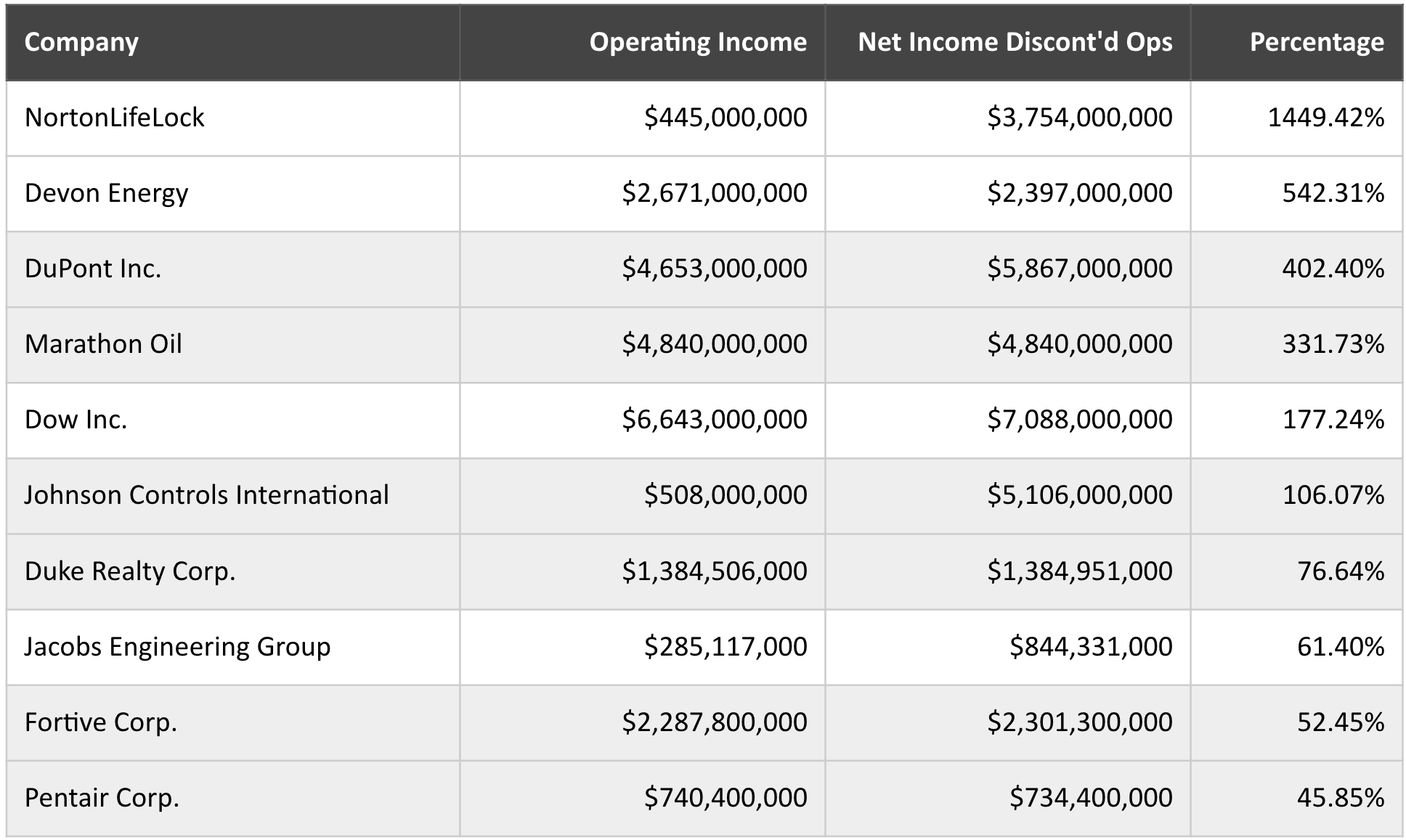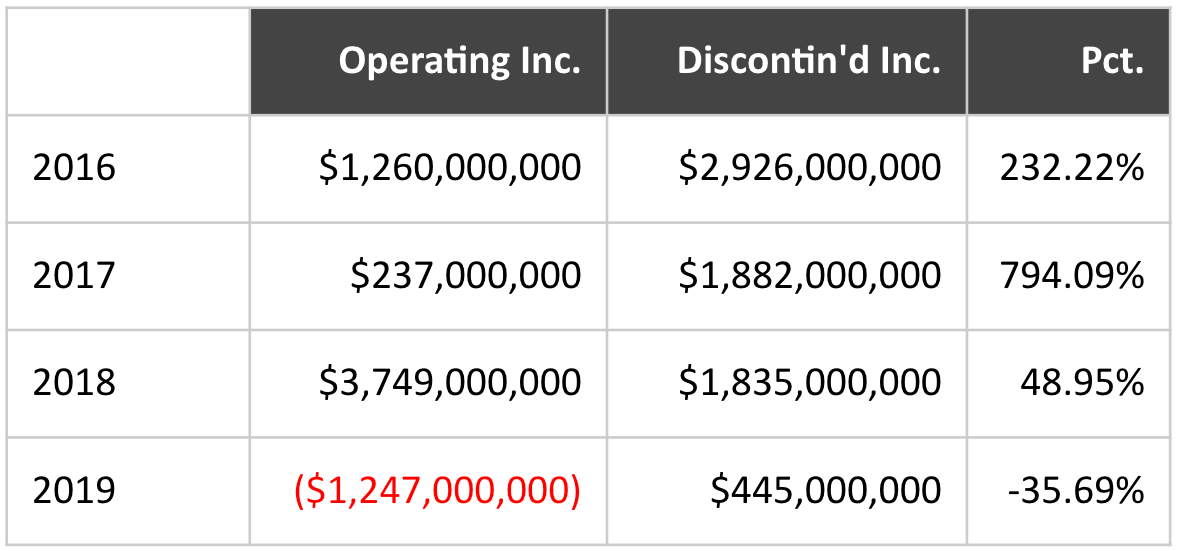We were sifting through 2019 annual reports the other day, reacquainting ourselves with all the ways firms adjust net income, when we came upon an interesting item from Eli Lilly & Co. ($LLY).
Lilly reported non-GAAP net income lower than actual net income, which is an unusual thing; most firms report non-GAAP income that’s higher than actual net income. And why did Lilly do that? Because the company had a one-time gain of $3.68 billion in 2019, stemming from discontinued operations: it had cashed out of an animal health business it had spun off.
Hmmm, we wondered. How many other firms report large gains from discontinued operations? Do any firms report gains that are so large, or report those one-time gains so often, that income from discontinued operations actually exceeds operating income?
So we dug into the data to find out. The answers are yes and yes.
We examined operating income among the S&P 500 for 2016 to 2019, and compared that to net income from discontinued operations for the same period. Collectively, the S&P 500 reported $5.66 trillion in operating income during those four years. They also reported $32.92 billion in income from discontinued operations — only 0.58 percent of operating income.
That’s only the large picture, however. When you zero into specific firms, some of them tell quite a different picture.
Table 1, below, shows the 10 firms with the largest percentage of income from discontinued operations relative to operating income. As you can see, six of the 10 firms actually had more income from discontinued operations 2016-2019 than they did from regular operations.

We know what you’re thinking: “Oh sure, the overall percentage might be high — but that could be from one huge divestment or spin-off. You’re still looking at such a large picture that the numbers aren’t that meaningful.”
Ha! We considered that too. When you look at each of the 10 firms above one year at a time, you still find several that had significant income, year after year, from discontinued operations. One good example of what we mean is Dow ($DOW), below.

Granted, Dow went through quite a bit of tumult over the late 2010s as management first merged the company and DuPont de Nemours ($DD) in 2017, and then split the merged business again into Dow, DuPont, and a third business called Corteva ($CTVA) in 2019. Not every firm will see that many operations discontinued in such a short period.
Another example is Fortive ($FTV), the industrial conglomerate spun out of Danaher ($DHR) in 2016. Fortive’s gains from discontinued operations weren’t quite as eye-popping as those from Dow, but they were still significant. See below.

What were all these discontinuations about? We didn’t delve into that question, although you can always use our trace feature and the Interactive Disclosures database to see exactly what a firm had to say about those one-time gains.
Regardless, the numbers are the numbers — and they show that for at least some firms, getting out of operations can be just as lucrative as staying in them.